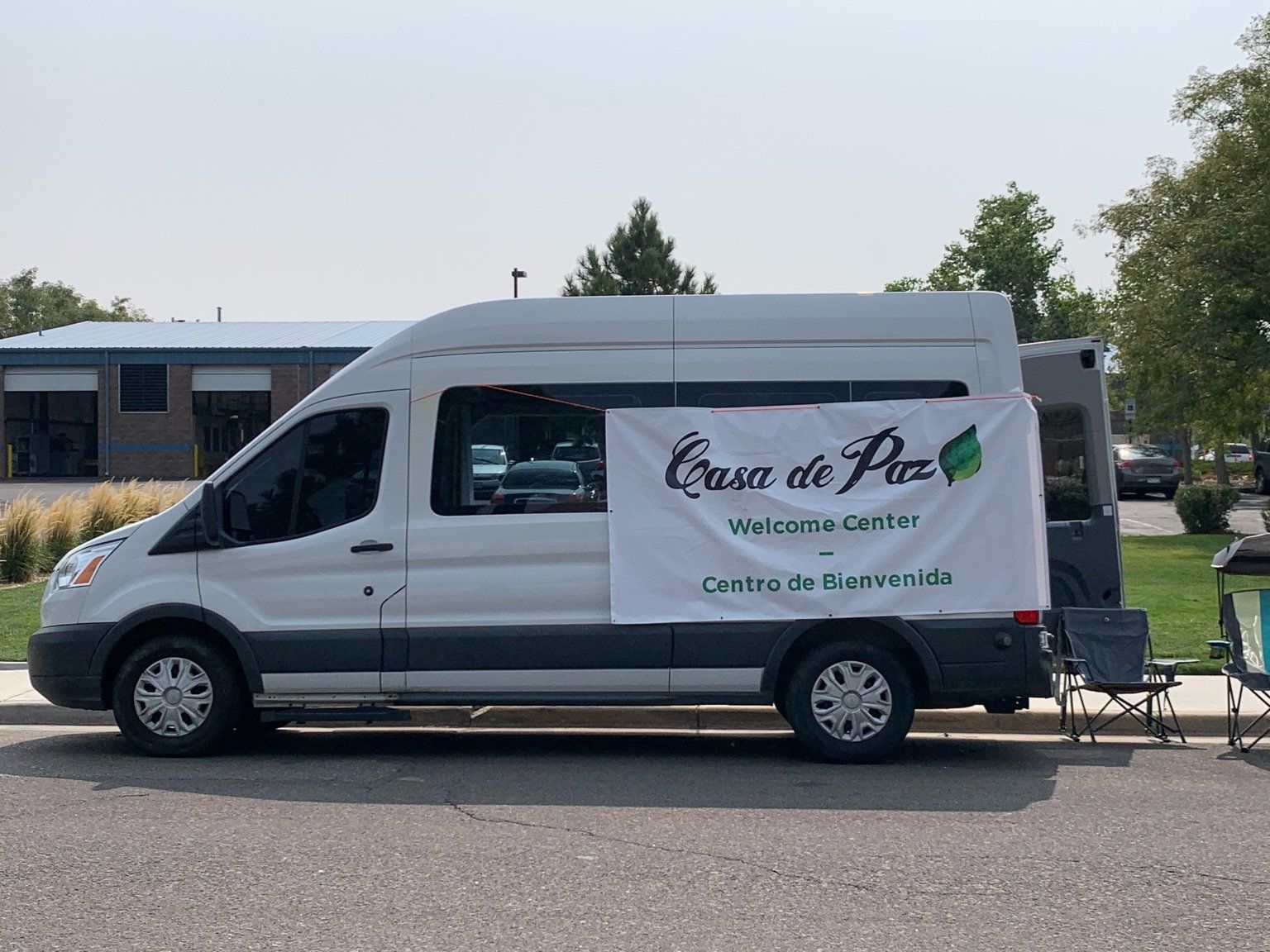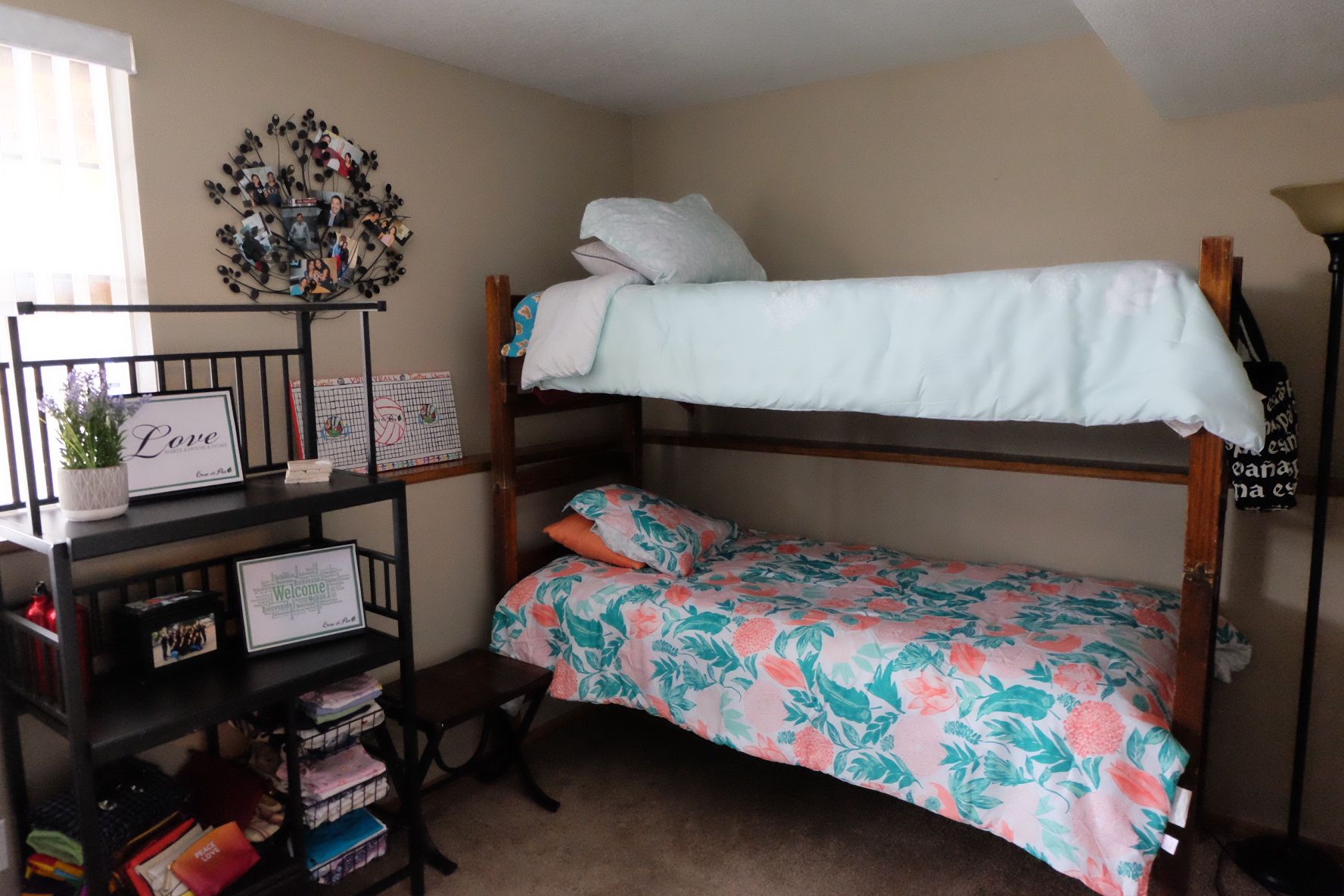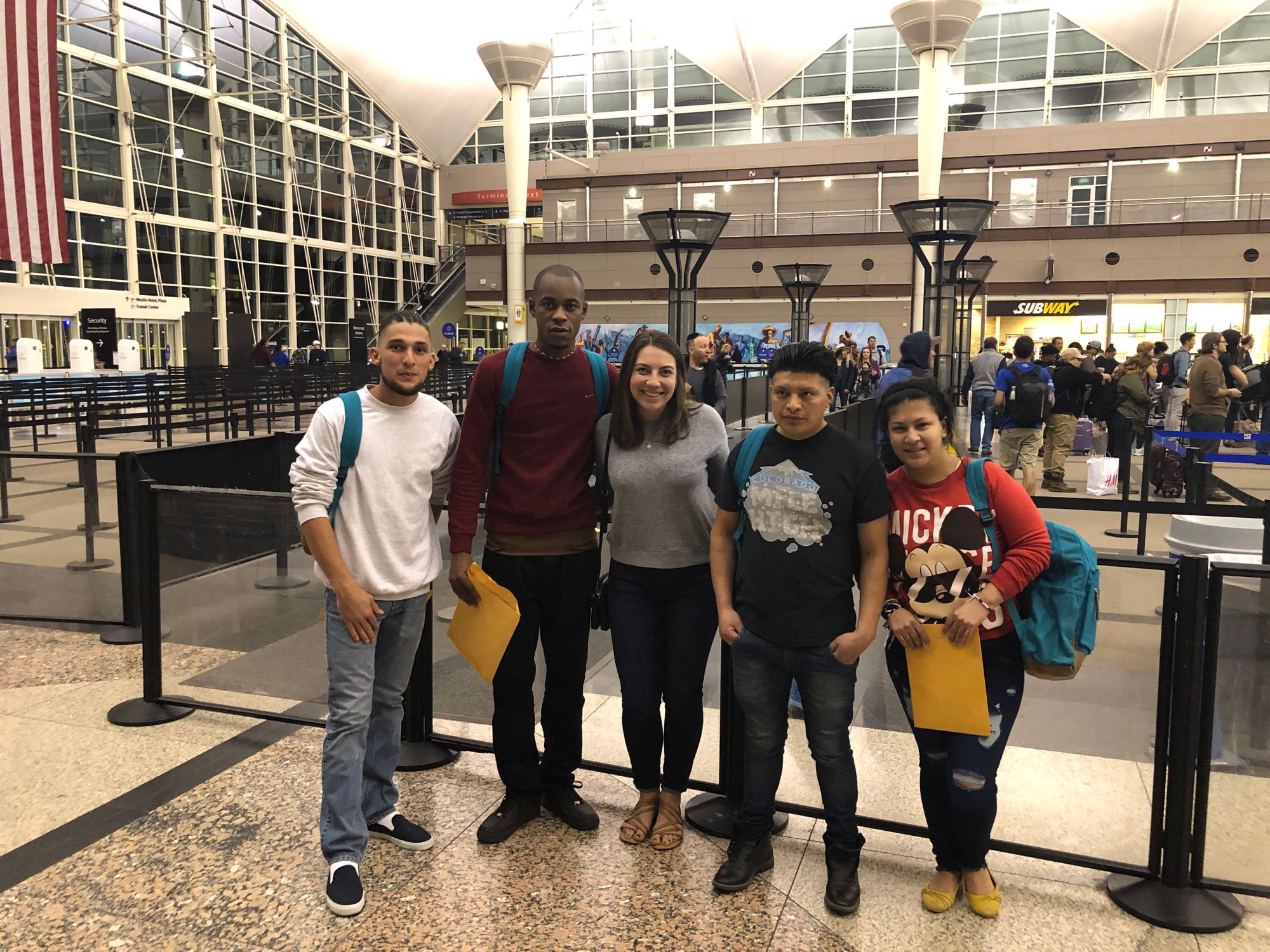For the past 9 years, Sarah Jackson has been sharing heart and house with people released from the Aurora Detention Center in Aurora, CO. Casa de Paz (House of Peace) offers shelter, meals, plane/bus tickets, transportation and emotional support to immigrants as they transition from detention to their final destination. It also welcomes out-of-town families in its hospitality home, creating a space for families to be together, right where they belong. Since 2012, Casa de Paz has hosted 3,202 guests from seventy-eight countries.
Here, Sarah talks about post-release best practices she’s learned over the years.
Every day we refine what we do to ensure the best possible experience for our guests at Casa de Paz.
In September 2020 we found a way to make the transition from detention smoother and safer for people who either won their case, obtained humanitarian parole or were released on bond. Casa on Wheels is a van that we park at the back of the detention center, which is where people are released. Even though the detention center claims that all those released have tested negative for COVID, we take that with a grain of salt and treat all our guests as though they have been exposed or might be infected. If they want a test, we can arrange it. In 11 months, no one has taken up our offer to quarantine for two weeks in a hotel room before traveling.

We have a volunteer inside the van keeping an eye on the back door. When someone is released, we greet them and offer assistance. Most folks have somewhere to go …. maybe family in Texas, or a sponsor or friend somewhere else. Those that don’t immediately have a place to go we take to the Casa, on a case-by-case basis.
Sometimes we get advance notice that people will be released, and sometimes we don’t. We know people will typically be released between the hours of 9 a.m. and 6 p.m. Sometimes we’ll get a call from a guard, or a lawyer. But most of the time we don’t have advance notice. Usually we see one or two people released at a time.
Folks inside the center have likely heard of Casa de Paz already, so when they see the van, they know who we are. After we greet them and they’re in the van, we offer them basic stuff. For example, we have backpacks with snacks and toiletries, Tracfhones, calling cards, and clothing, such as coats, socks, shoes and shoelaces.

We also have “Welcome to the US cards” so as soon as we greet someone we can give them a card that celebrates their arrival to the US. Once a guard came out and asked for cards to distribute to folks being released, and that was nice.
Let’s say someone is released and their family lives in Los Angeles, and they need to make plans to go home. We take them to the Casa – about 15 minutes away from the detention center - and work with them on the best way to meet their needs, and get them where they need to go. We don’t assume they’ll want a plane ticket. Some people might be deathly afraid of flying and would prefer bus tickets.
Most of the time the first thing a guest wants is to make calls to let family, friends or sponsors know they’re out. In the meantime, if they’re hungry we have food available. We love to eat outside; in the detention center, all the windows in the pods are blacked out and there’s no outdoor access, so our guests usually prefer to eat outside.

If people need overnight shelter, we offer that too, though now during COVID, we typically provide hotel rooms instead.
The final step is to take them to an airport or bus station, or to a friend’s house. At the airport, we go inside with them. And that’s where it ends for 99% of our guests – waving goodbye at the departure gate.
Our visitation program has been suspended because of Covid, but we have a Pen Pal program, which helps us keep in contact with people and share information about the Casa with others. Guards at the detention center, ICE officers, judges, lawyers and others also refer people to us.
When people leave the detention center, we ask them to let their friends still in detention know about us, that we’re safe, that we’ll take care of them. And we partner with other immigrant rights non-profits and through social media.
Tools that we use to recruit, communicate and train.
Our volunteers are so critical to our work. People can learn about volunteering on our website, where they can find links to a Google form with questions about background, languages spoken, reasons for wanting to volunteer, etc. It takes 10 to 15 minutes and really forces a potential volunteer to reflect.
We use a free online platform, Thinkific, for training. The platform includes different chapters, including ones on trauma, how to relate to guests during post-release, our Pen Pal program and Casa on Wheels, to give volunteers a good foundational knowledge not just about Detention 101, but on the different roles they could play at the Casa and how they all tie together.
To communicate securely, we use Mail Chimp for templated emails and also Signal, which is encrypted, for our team on the ground at the detention center when we’re using full names, A numbers, destinations, etc. We also communicate through Slack, a platform that can accommodate different channels for people serving different roles.
Once through training, we use SignUpGenuis – free, again – for people to sign up for various tasks, such as Casa on Wheels, preparing a meal, donor thank you calls, etc. plus a “remote companion” in the Signal group that provides transportation support and other sensitive information as needed. Next to each task is a description for more information. This data can then be viewed on a calendar on the site.
POST-RELEASE SUPPORT THE CASA WAY: STEP BY STEP
So how does this all come together when a person is released? First, I send out a Signal message to all that day’s volunteers to make sure we’re all connected and I also inform the Casa on Wheels volunteer.
We greet the guest(s) and see what their immediate needs are by asking them if they have family here, or where they’re trying to head to. When they come to the van we say “Let’s go shopping!” and let them pick what they’d like for their backpack.
Burner phones are ready – set up and charged. We also give out calling cards.
Travel plans are coordinated at Casa de Paz. That’s when we activate the remote companions to search for bus or plane tickets and hotel rooms, and to contact family members or friends. For most folks, we’re able to find a same day bus or plane ticket. We use an online spreadsheet to track all details related to travel that’s shared with volunteers.
Then we eat dinner, and go shopping (again)! for additional clothing and other items.
AT THE AIRPORT
Once we arrive at the airport, the first thing we do is to print out tickets at the counter or kiosk. Then we prepare our guest for interaction with TSA so they’re not surprised or afraid. As we walk them to the gate, we make sure to point things out along the way, such as bathrooms and customer service. All these little things are so helpful and reassuring to our guests. And, if needed, we also run through a connecting flight scenario.

AT THE BUS STATION
Here again, the first thing we do is print out a ticket. If required, we’ll ask someone to help explain the transfer process.
AT THE HOTEL
If a guest doesn’t have an ID then we ask a volunteer to book a room under their name.
Finally, we ask our guests to let us know when they have arrived safely at their destination. We let them know we’d love to keep in touch with them. We also connect them to other organizations in the area we know and trust, and ask them if they need assistance with ESL courses or job searches.
This is simple, but important work. While we are there to provide basic necessities for someone to get to their final destination, what we’re doing is so much more. We are reminding folks that they not only are welcome here, but that they belong here. Standing alongside our immigrant friends that are impacted by ICE detention is one way that we, as global citizens, can create a more welcoming world for all of us to live in.

